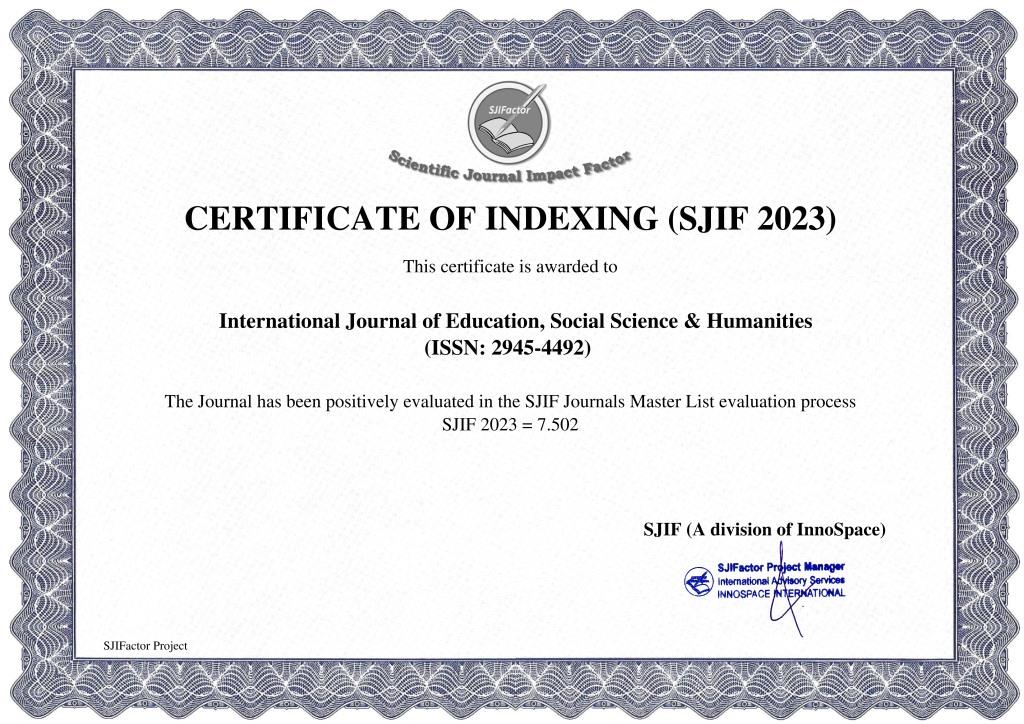FOSTERING EMPATHY AND KINDNESS IN CHILDREN: A PEDAGOGICAL APPROACH
Keywords:
Empathy, kindness, education, pedagogy, social and emotional learning, perspective-taking, prosocial behavior, curriculum integration, classroom environment, social responsibility.Abstract
This pedagogical article discusses the importance of fostering empathy and kindness in children and provides practical strategies for educators to integrate these values into their teaching practice. It highlights the role of empathy and kindness in promoting positive social interactions, healthy relationships, and emotional well-being, and addresses the challenges educators may face in cultivating these values. The article emphasizes the need for educators to model empathetic behavior, teach perspective-taking skills, create a caring and inclusive environment, encourage prosocial behavior, and integrate empathy and kindness into the curriculum.
References
Eisenberg, N., & Miller, P. A. (1987). The relation of empathy to prosocial and related behaviors. Psychological Bulletin, 101(1), 91–119. https://doi.org/10.1037/0033-2909.101.1.91
Jolliffe, D., & Farrington, D. P. (2006). Development and validation of the Basic Empathy Scale. Journal of Adolescence, 29(4), 589–611. https://doi.org/10.1016/j.adolescence.2005.08.010
Riess, H. (2017). The science of empathy. Journal of Patient Experience, 4(2), 74–77. https://doi.org/10.1177/2374373517699267
Jones, S. M., & Bouffard, S. M. (2012). Social and emotional learning in schools: From programs to strategies. Social Policy Report, 26(4), 1–33. https://www.srcd.org/sites/default/files/documents/spr_264.pdf
Berkowitz, M. W., & Grych, J. H. (1998). Fostering goodness: Teaching parents to facilitate children's moral development. Journal of Moral Education, 27(3), 371–391. https://doi.org/10.1080/0305724980270307
Schonert-Reichl, K. A., & Lawlor, M. S. (2010). The effects of a mindfulness-based education program on pre- and early adolescents’ well-being and social and emotional competence. Mindfulness, 1(3), 137–151. https://doi.org/10.1007/s12671-010-0011-8
Durlak, J. A., Weissberg, R. P., Dymnicki, A. B., Taylor, R. D., & Schellinger, K. B. (2011). The impact of enhancing students' social and emotional learning: A meta-analysis of school-based universal interventions. Child Development, 82(1), 405–432. https://doi.org/10.1111/j.1467-8624.2010.01564.x
Batson, C. D., Ahmad, N., & Tsang, J. A. (2002). Four motives for community involvement. Journal of Social Issues, 58(3), 429–445. https://doi.org/10.1111/1540-4560.00274
Wispe, L. (1986). The distinction between sympathy and empathy: To call forth a concept, a word is needed. Journal of Personality and Social Psychology, 50(2), 314–321. https://doi.org/10.1037/0022-3514.50.2.314
Noddings, N. (1984). Caring: A feminine approach to ethics and moral education. University of California Press.














